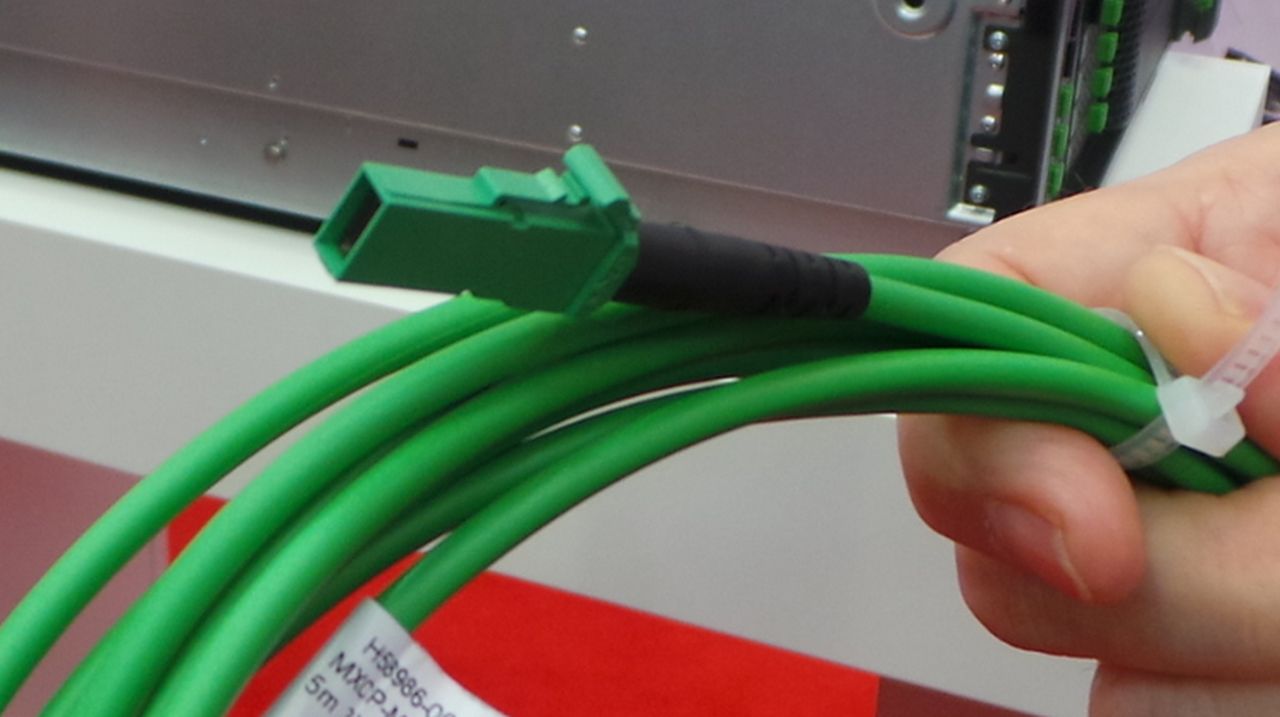The biggest revolution in the data centre could land in 2017
Plus how Intel is giving ARM a hard time

Fujitsu's senior director of server engineering, Georg Mueller, has confirmed to TechRadar Pro that its first server products that use silicon photonics will go on sale in 2017, adding that they may well be the first.
Back in November 2013, Fujitsu demonstrated the first Optical PCI Express (OPCIe) server based on Intel's Silicon Photonics technology.
Switching from copper to light allows the data centre to be reinvented, said Mueller. For one, modular structure would become a reality with a more efficient use of infrastructure and the end of over provisioning.
A massive technological leap
By separating the compute entity and the IO for example, you could get your storage array, for example, located at up to 300m away from your actual server with minimal latency and scalable to up to 1.6Tbps.
The technology uses PCI Express Gen 3 which on an x16 slot can hit 126Gbps, just a fraction of the available bandwidth silicon photonics offers. PCI Express Gen 4, which is scheduled to be released next year, will double that transfer rate.
The model presented on the company's booth at CeBIT 2015 is part of the Primergy RSA family and can house up to 32 drives as well as up to eight-dual slot GPGPU (think Intel Xeon Phi).
There are many other scenarios especially when combined with the SDx (software-defined everything) paradigm.
Sign up to the TechRadar Pro newsletter to get all the top news, opinion, features and guidance your business needs to succeed!
Bringing optical and silicon together is just one of the many game-changing technologies that will emerge over the next few years.
"We're also working on non-volatile main memory", Mueller revealed, but it will be different to the HP's Memristor, before adding that the company is also working on computer architectures similar to its competitor's "Machine".
Intel's cunning strategy
The Xeon Processor D also got a mention from Fujitsu's senior director of server engineering. "Software licensing makes it very interesting" as the enterprise software vendors usually charge on a per socket basis and server buyers are usually very receptive to any technology that can cram more cores per socket, especially if it is a Xeon.
Given that it is a SoC (system on chip), Mueller believes that it will give ARM vendors like Cavium a hard time as it keeps the deployment model within the customer base.
"European customers are conservative," he said. "They are not very much in favour [of ARM] on a system level".
The problem, Mueller highlights, stems from missing support at an application level, a lack of compliant offer for the data centre infrastructure and toolsets for deployment which are not widely available for ARM.
"If OpenStack was widely deployed, it would have been easier," he remarked.
When it came to discussion about the rise of OEM and ODM server manufacturers like Quanta and Supermicro, Mueller says that while he is concerned about new players, the focus of the newcomers are mostly in the hyperscale market.
Fujitsu is active mostly in the mid-market and is cognizant that its strength are in verticals compared to ODMs/OEMs thanks to its service and system solutions (including lifecycle management) that goes beyond "just" the hardware.
The fact that the size of the midmarket has increased because of the sheer rise in capabilities and complexities required by Fujitsu's business customers could also explain why others may be reluctant to compete in that segment for now.

Désiré has been musing and writing about technology during a career spanning four decades. He dabbled in website builders and web hosting when DHTML and frames were in vogue and started narrating about the impact of technology on society just before the start of the Y2K hysteria at the turn of the last millennium.